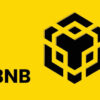
The rise of Non-Fungible Tokens (NFTs) has captured the attention of both the cryptocurrency community and the broader public. NFTs represent a transformative shift in how digital assets are owned, traded, and valued. Central to this revolution is Ethereum, the blockchain platform that has become synonymous with NFT innovation. This article explores the emergence of NFTs, their connection to Ethereum, and the impact they are having on various industries.
Introduction
Non-Fungible Tokens (NFTs) have emerged as a significant development in the world of blockchain technology, enabling unique digital assets to be bought, sold, and owned. Ethereum, with its advanced smart contract capabilities, is the driving force behind the NFT boom. This guide will provide an overview of NFTs, their relationship with Ethereum, and the implications of this growing trend.
What Are NFTs?
1. Definition and Characteristics
Non-Fungible Tokens (NFTs) are digital assets that represent ownership of a unique item or piece of content, verified through blockchain technology. Unlike cryptocurrencies such as Bitcoin or Ethereum, which are fungible and interchangeable, NFTs are distinct and cannot be exchanged on a one-to-one basis.
- Uniqueness: Each NFT has a unique identifier that distinguishes it from other tokens.
- Indivisibility: NFTs cannot be divided into smaller units; they exist as whole items.
Key Characteristics:
- Authenticity: NFTs provide a way to verify the authenticity and ownership of digital assets.
- Ownership: Owners have control over their NFTs and can transfer or sell them as desired.
2. Types of NFTs
NFTs can represent a wide range of digital and physical assets, including artwork, collectibles, and real estate. Some common types of NFTs include:
- Digital Art: Artworks created and sold exclusively in digital form.
- Collectibles: Unique items such as virtual trading cards or digital memorabilia.
- Virtual Real Estate: Ownership of digital land or properties in virtual worlds.
Examples of NFTs:
- Artwork: Digital paintings and illustrations sold as NFTs.
- Collectibles: Rare digital items like CryptoKitties or NBA Top Shot moments.
Ethereum’s Role in the NFT Ecosystem
1. Smart Contracts and ERC-721 Standard
Ethereum’s ability to support smart contracts is fundamental to the functioning of NFTs. Smart contracts are self-executing contracts with terms written into code, enabling automated and transparent transactions. The ERC-721 standard is a key Ethereum token standard specifically designed for creating NFTs.
- ERC-721 Standard: Defines a standard interface for creating non-fungible tokens on the Ethereum blockchain.
- Smart Contract Functionality: Facilitates the creation, transfer, and management of NFTs.
Technical Insights:
- Smart Contracts: Enable automated transactions and enforce ownership rights.
- ERC-721: Standardizes the creation and management of unique digital tokens.
2. NFT Marketplaces on Ethereum
Ethereum has become the primary platform for NFT marketplaces, where users can buy, sell, and trade NFTs. These marketplaces leverage Ethereum’s blockchain to ensure secure and transparent transactions.
- OpenSea: One of the largest NFT marketplaces, supporting a wide range of digital assets.
- Rarible: A decentralized marketplace that allows users to create and trade NFTs.
Popular Marketplaces:
- OpenSea: Offers a vast selection of NFTs across various categories.
- Rarible: Provides a platform for creators to mint and sell their NFTs.
3. Benefits of Using Ethereum for NFTs
Ethereum’s blockchain offers several advantages for NFT creation and trading, including:
- Decentralization: Ethereum’s decentralized nature ensures that NFTs are not controlled by any single entity.
- Security: Transactions and ownership records are secured by Ethereum’s blockchain, reducing the risk of fraud.
- Interoperability: Ethereum-based NFTs can be integrated with various applications and platforms.
Advantages:
- Secure Transactions: Ethereum’s blockchain provides a secure and tamper-proof ledger for NFTs.
- Broad Integration: NFTs created on Ethereum can be used across different platforms and applications.
Impact of NFTs on Various Industries
1. Art and Entertainment
NFTs have revolutionized the art and entertainment industries by providing a new way for artists to monetize their work and for fans to engage with digital content. Artists can now sell digital artwork as NFTs, often earning royalties from secondary sales.
- Digital Art Sales: Artists can sell unique digital pieces directly to collectors without intermediaries.
- Royalties: Smart contracts can be programmed to automatically pay royalties on secondary sales.
Industry Examples:
- Art Market: Digital artists are creating and selling unique artwork as NFTs.
- Entertainment: Musicians and filmmakers are exploring NFTs for exclusive content and experiences.
2. Gaming
The gaming industry has embraced NFTs to create unique in-game assets that players can buy, sell, and trade. NFTs can represent items such as skins, characters, and virtual land.
- In-Game Assets: Players can own and trade unique items within virtual worlds.
- Play-to-Earn: Some games incorporate NFTs as part of play-to-earn models, where players can earn rewards through gameplay.
Gaming Examples:
- CryptoKitties: A game where players collect and breed unique digital cats.
- Decentraland: A virtual world where players can buy and sell virtual land and assets as NFTs.
3. Real Estate
NFTs are being explored for tokenizing real estate assets, allowing for fractional ownership and easier transfer of property rights. This innovative approach has the potential to democratize access to real estate investment.
- Fractional Ownership: Investors can buy fractions of real estate assets represented by NFTs.
- Streamlined Transactions: NFTs can simplify and secure property transfers through smart contracts.
Real Estate Examples:
- Virtual Real Estate: Platforms like Decentraland allow users to buy and trade virtual properties as NFTs.
- Physical Real Estate: Projects are exploring the use of NFTs for fractional ownership and transfer of physical properties.
Challenges and Future Outlook
1. Scalability and Environmental Impact
The Ethereum network faces challenges related to scalability and environmental impact due to its Proof of Work (PoW) consensus mechanism. High transaction volumes and energy consumption are concerns for the NFT ecosystem.
- Scalability Issues: Ethereum’s current infrastructure can lead to high fees and slow transaction times during peak periods.
- Environmental Concerns: PoW requires significant energy consumption, raising environmental concerns.
Addressing Challenges:
- Ethereum 2.0: The transition to Ethereum 2.0, with its Proof of Stake (PoS) consensus mechanism, aims to address scalability and environmental issues.
- Layer 2 Solutions: Technologies like rollups and sidechains are being developed to improve scalability and reduce costs.
2. Regulatory Uncertainty
As the NFT space grows, regulatory frameworks are still evolving. The legal status of NFTs and their classification as securities or commodities can impact their development and adoption.
- Regulatory Developments: Governments and regulatory bodies are working to define the legal framework for NFTs.
- Compliance: NFT creators and platforms must navigate regulatory requirements to ensure compliance.
Regulatory Considerations:
- Legal Status: The classification of NFTs may affect their regulation and compliance.
- Policy Changes: Ongoing developments in NFT regulations will shape the future of the industry.
Conclusion
The rise of NFTs represents a significant advancement in the world of digital assets, with Ethereum playing a central role in their development and proliferation. By leveraging Ethereum’s blockchain technology and smart contracts, NFTs offer unique opportunities for ownership, creativity, and investment across various industries.
As the NFT ecosystem continues to evolve, addressing challenges related to scalability, environmental impact, and regulation will be crucial for its sustained growth and success. Staying informed about these developments and embracing emerging technologies will help navigate the dynamic and rapidly changing world of NFTs.











